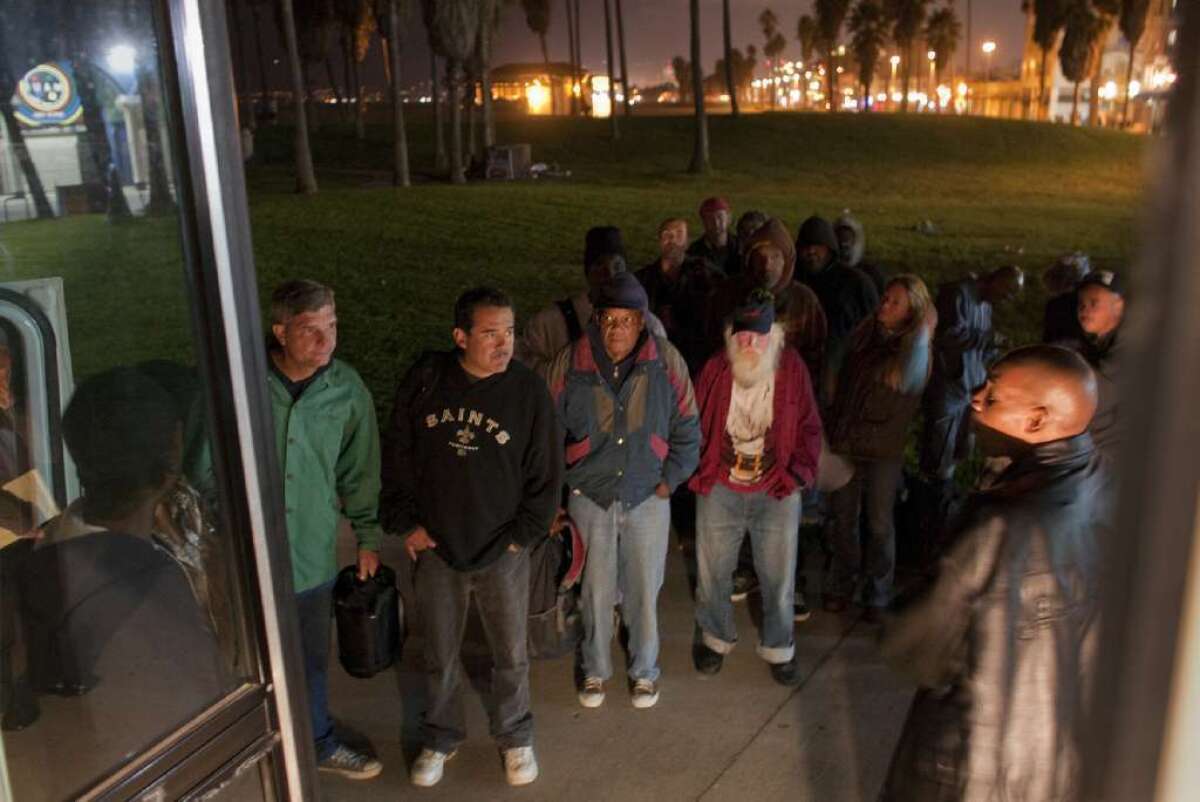75% of homeless smoke; doctors say it’s time to intervene

- Share via
About three-quarters of homeless people smoke cigarettes, and the complacent approach to that situation needs to change to support efforts to get them to quit, doctors wrote in the New England Journal of Medicine.
“Vulnerable and marginalized populations continue to use tobacco at high rates,” including the 2.3 million to 3.5 million people in the United States who are homeless. There exists “a fatalistic attitude among healthcare professionals toward addressing tobacco use in this population,” they wrote in the Thursday issue of the journal.
The authors acknowledged particular difficulties in getting homeless people to stop or reduce their smoking, including psychiatric and substance abuse issues. A lack of health insurance also means a lack of access to smoking cessation programs.
“Whereas most homeless shelters no longer permit smoking indoors, smoking around shelters is commonplace and contributes to a culture of tobacco use that makes quitting more difficult and relapse more likely,” the doctors wrote.
The lead author, Dr. Travis Baggett, an instructor in medicine at Harvard Medical School and Massachusetts General Hospital, said that during much of his 13 years of work with homeless people, he would have agreed that tobacco was not a top priority. But he said his attitude has changed in the last five years.
Smoking “causes too many problems for us to ignore it,” he said in an accompanying interview on the journal’s website. It is “making our patients poorer or sicker, and they want to quit.”
Smoking and mental illness are associated, but Baggett said the high rate of smoking among homeless is not fully explained by that complicating factor.
Baggett said the tobacco industry has taken advantage of the situation; the article cited a 1995 R.J. Reynolds program called Sub-Culture Urban Marketing, or SCUM, that targeted vulnerable people in San Francisco. However, a Reynolds spokesman said the program was never adopted.
“We have no programs or marketing that focus on that group,” David Howard said in an email. “All of our marketing efforts are developed for and communicate to adult tobacco consumers, all adult tobacco consumers.”
The rate of smoking among homeless people is four times that of the U.S. adult population, the doctors wrote in the journal. And the rate of smoking-related deaths is twice that among people with homes.
“Doing nothing about this problem is no longer acceptable,” Baggett said. In the article, the authors suggest interventions at several levels, including smoke-free policies at shelters, efforts to get individuals to stop smoking, and financial incentives to those who quit.
@mmacvean on Twitter







